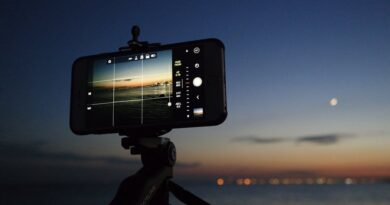Camera Bags: Which One Is Right for You?
Choosing the right camera bag can feel overwhelming. With so many options out there, how do you know which one suits your needs? This guide will help you find the perfect camera bag, whether you’re a beginner or a seasoned pro.
What Do You Need in a Camera Bag?

First things first: think about what you need to carry. Do you have just a camera and a lens, or do you also have extra lenses, a tripod, and other accessories? Knowing your gear is essential. It will guide your choice.
Here are some questions to consider:
- What camera do you use? (DSLR, mirrorless, compact?)
- How many lenses do you have?
- Do you carry a laptop or tablet?
- Are you often outdoors? (Think about weather resistance!)
Types of Camera Bags: Which One Fits Your Style?

Different photographers have different styles. Hence, there are several types of camera bags. Let’s explore a few of the most common options.
1. Sling Bags: The Versatile Choice
Sling bags are popular for their flexibility. You can quickly swing them around to your front without taking them off. They usually have enough space for a camera, one or two lenses, and some small accessories.
These bags are great if you’re always on the move. However, they may not hold as much gear as a backpack. Consider a sling bag if you prefer a casual, on-the-go style.
2. Backpacks: For the Serious Shooter
Backpacks offer ample space and comfort, especially if you carry a lot of gear. They can fit multiple cameras, several lenses, and even a laptop. If you’re going on a long shoot or hiking, a backpack is often the way to go.
Many camera backpacks also come with padded compartments. This keeps your equipment safe and organized. Just remember to check the weight, as a fully loaded backpack can get heavy!
3. Shoulder Bags: Classic and Easy Access
Shoulder bags have a timeless appeal. They often have a sleek design and allow quick access to your camera. This can be useful when you want to capture spontaneous moments.
However, they might not offer the same level of protection as a backpack. If you prefer a stylish yet functional option for everyday use, a shoulder bag might be your best bet.
4. Hard Cases: Maximum Protection
If you’re traveling or storing your gear for a long time, hard cases provide security. They protect your camera and lenses from drops, water, and dust. These cases work well for photographers who need to transport expensive equipment safely.
However, they can be bulky and heavy. Consider a hard case mainly for transport rather than daily use.
How to Choose the Right Camera Bag for You?

Now that you know the types, lets narrow down your choice. Here are some tips to help you make the right decision:
- Evaluate Your Gear: Make a list of all your equipment and their dimensions.
- Consider Your Style: Do you prefer a casual or professional look?
- Think About Comfort: Will you be carrying your bag for long periods?
- Check for Protection: Does the bag protect against weather and impact?
By answering these questions, you’ll be well on your way to choosing the right camera bag.
What Features Should You Look For?

When selecting a camera bag, certain features can enhance your overall experience. Keep an eye out for the following:
- Padded Dividers: These keep your equipment organized and safe from damage.
- Water Resistance: Look for bags with waterproof materials or rain covers.
- Adjustable Straps: Ensure they fit comfortably on your body and distribute weight evenly.
- Easy Access Pockets: Side pockets are handy for quick access to small items like batteries or memory cards.
Not all bags are created equal, so choose wisely based on your needs.
What are the Common Misconceptions?
Many people have misconceptions about camera bags. Lets clear some of them up:
1. Bigger is Always Better
While it can be tempting to go for a large bag, it might not always be the best choice. A bigger bag can lead to carrying unnecessary items, increasing weight and bulk. Choose a size that fits your gear without excess space.
2. Any Bag Can Hold a Camera
Not all bags offer proper protection. A regular backpack may not have enough padding or compartments. Always opt for a bag designed specifically for camera gear.
3. Cost Equals Quality
Just because a bag is expensive doesnt mean it’s the best for you. Assess the features and how they align with your needs. Sometimes, you can find budget-friendly options that work perfectly!
How to Organize Your Camera Bag?
Once you’ve picked your bag, it’s time to organize it right. Here are some tips:
- Place Heaviest Items at the Bottom: This will help balance the weight.
- Use Dividers Wisely: Separate lenses from cameras to avoid scratches.
- Keep Accessories Accessible: Store chargers or memory cards in side pockets for easy access.
- Regularly Reassess Your Gear: Remove items you no longer use.
Organizing your bag effectively will make your shooting experience smoother.
Where Can You Buy Camera Bags?
Many retailers offer a wide selection of camera bags. You can check out:
- Local camera shops for personalized advice
- Online marketplaces like Amazon or B&H Photo
- Brand websites like Lowepro or Peak Design for specific models
Be sure to read reviews and compare prices before making a purchase. it’s a good idea to try the bag in person if possible.
Conclusion: Choose Wisely and Capture Beautiful Moments!
Finding the right camera bag is crucial for any photographer. it’s not just about style; it’s about how well it protects your gear and how easy it makes your photography adventures. Remember to evaluate your needs, consider the features, and debunk common myths.
Now that you’re equipped with this information, go out there and find the perfect camera bag for your journey! Your next great photo awaits!
For more tips on photography gear, check out our post on Essential Camera Accessories.



